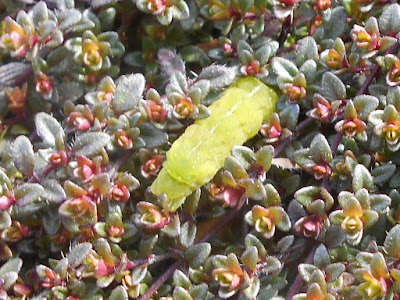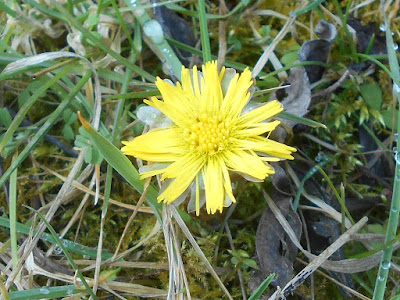And the Lord spake unto Noah saying, 'Get thy skates on and nip round to Tesco in Ninevah and grab a couple of umbrellas, 'cos its going to be raining cats and dogs. Oh and that reminds me, 'ang on to a couple each of cats and dogs; I'll explain later'.
But Noah, having cash-flow problems, heeded not the Lord and went to
As we know, Noah went on to study arkeology. [Ed: That's enough! Stop right there and get back to reality!]
However, rain or not, plants are growing, but more, I suspect, as a consequence of the increasing day length than temperatures. And insects remain scarce as, being sentient creatures, they can respond more immediately to the prevailing conditions. In Byfield earlier today Ground Elder, Aegopodium podagraria, was certainly not being held back by the weather.
 |
| Ground Elder in a Byfield garden. 31 March, 2018 |
Its old country names include Goutweed and (less commonly) Goutwort, it once being used in the treatment of this ailment. It is a pestilential weed around Byfield and over much of Britain, spreading by seed but, far more often, by rhizomes. Its specific name is derived from the Greek podagra, meaning gout. Incidentally, every year, particularly around lakes and over wet ground generally, I record the hoverfly Neoascia podagrica; what the connection - if any - is between this insect and gout I have no idea. I can only think that perhaps specimens had once been taken from the umbels of Ground Elder.
Other plants refusing to be deterred by the weather include saxifrages, aubretia and tulips. The former was attracting honey bees three days ago but the latter refuses to fully open.
 |
Our tulips are reluctant to fully open. Stefen Hill, Daventry.
31 March, 2018
|
Through Byfield flows a tributary of the River Cherwell. Today, following heavy rains, which continue to fall, this stream was close to bursting its banks. The colour of the water is a consequence of questionable cultivation techniques and a timely reminder of the enormous - and ultimately unsustainable - damage suffered every year in terms of soil loss.
 |
A worrying sight. Water carrying away soil. Byfield, Northants.
31 March, 2018
|
I am trying to utilise no-dig techniques on our allotment but, to be fair, I don't think farmers can realistically consider this approach without far more research and advice. But a huge change in agriculture needs to come soon.











































